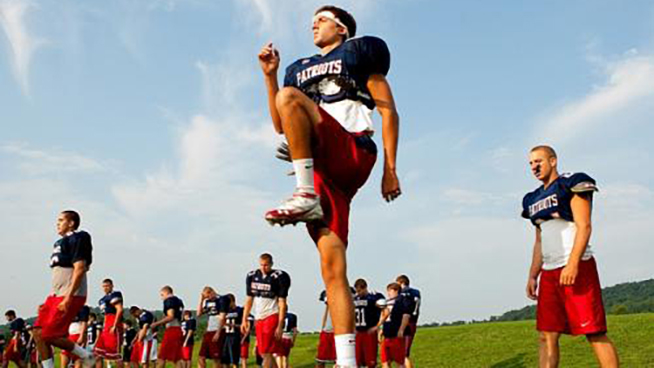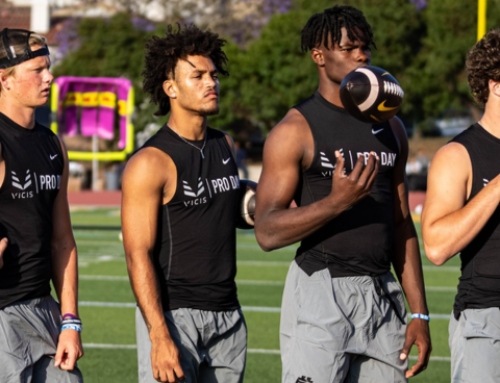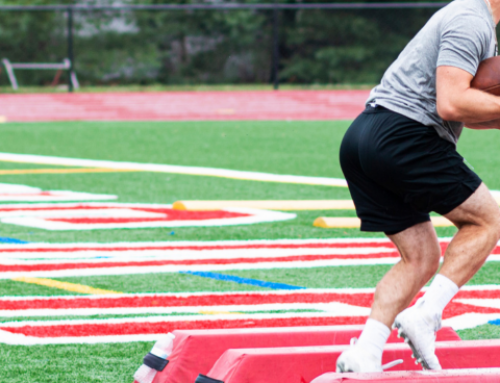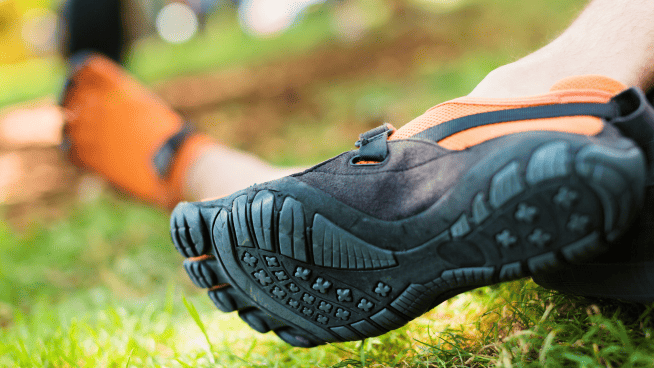Four-Stage Football Warm-Up
Warming up for a football game or practice differs in many ways from warm-ups for other sports. In order to compete at their best, football players need to do more than stretch and break a sweat. They must acclimate themselves to their tight, heavy equipment and participate in light contact drills so that their bodies are not shocked by full-speed contact during the game.
The best warm-ups do all of this—and reinforce proper technique. Here is a great four-part football warm-up for you to try.
Football Warm-Up Drills

Phase One: Dynamic Stretching
Warm muscles stretch more easily than cold muscles, so the first phase is a dynamic warm-up that stretches the muscles and raises core body temperature enough to break a sweat.
The most common dynamic stretches are
- High-Knee Runs
- Glute Kicks
- Lunges
- Side Lunges
- High Kicks
- Skipping Rope
Many teams perform two repetitions of the movements over 10 to 20 yards.
Phase Two: Static Stretching

Once you are sweating and your muscles have been primed, static stretches will loosen them for the coming activity and improve their flexibility.
A complete static stretching routine targets the hamstrings, quadriceps, hip flexors, groin muscles, and lower back.
Pay special attention to stretching your calf muscles. They are often overlooked, despite the fact that they are usually the first muscles to cramp in excessive heat. Hold each stretch for at least thirty seconds.
Phase Three: Athletic Movements
Position-specific movements can be included at the end of a warm-up routine to both reinforce technique and inject some fun into what is often a boring routine.
Offensive linemen can run plays against a dummy defense. Quarterbacks, running backs, and receivers can perform pat-and-go drills, running pass routes against air to improve timing. Defensive linemen can practice proper tackling form.
The best way to prevent injury and prepare players for the violence of the game is to build up to it slowly.
Phase Four: Team Drills

As a final step before competition, the offense and defense should run through a few basic plays at half speed. All 22 players will benefit from this drill. It incorporates everything they have been taught at a slow enough speed to ensure safety before the game.
RECOMMENDED FOR YOU
MOST POPULAR
Four-Stage Football Warm-Up
Warming up for a football game or practice differs in many ways from warm-ups for other sports. In order to compete at their best, football players need to do more than stretch and break a sweat. They must acclimate themselves to their tight, heavy equipment and participate in light contact drills so that their bodies are not shocked by full-speed contact during the game.
The best warm-ups do all of this—and reinforce proper technique. Here is a great four-part football warm-up for you to try.
Football Warm-Up Drills

Phase One: Dynamic Stretching
Warm muscles stretch more easily than cold muscles, so the first phase is a dynamic warm-up that stretches the muscles and raises core body temperature enough to break a sweat.
The most common dynamic stretches are
- High-Knee Runs
- Glute Kicks
- Lunges
- Side Lunges
- High Kicks
- Skipping Rope
Many teams perform two repetitions of the movements over 10 to 20 yards.
Phase Two: Static Stretching

Once you are sweating and your muscles have been primed, static stretches will loosen them for the coming activity and improve their flexibility.
A complete static stretching routine targets the hamstrings, quadriceps, hip flexors, groin muscles, and lower back.
Pay special attention to stretching your calf muscles. They are often overlooked, despite the fact that they are usually the first muscles to cramp in excessive heat. Hold each stretch for at least thirty seconds.
Phase Three: Athletic Movements
Position-specific movements can be included at the end of a warm-up routine to both reinforce technique and inject some fun into what is often a boring routine.
Offensive linemen can run plays against a dummy defense. Quarterbacks, running backs, and receivers can perform pat-and-go drills, running pass routes against air to improve timing. Defensive linemen can practice proper tackling form.
The best way to prevent injury and prepare players for the violence of the game is to build up to it slowly.
Phase Four: Team Drills

As a final step before competition, the offense and defense should run through a few basic plays at half speed. All 22 players will benefit from this drill. It incorporates everything they have been taught at a slow enough speed to ensure safety before the game.










